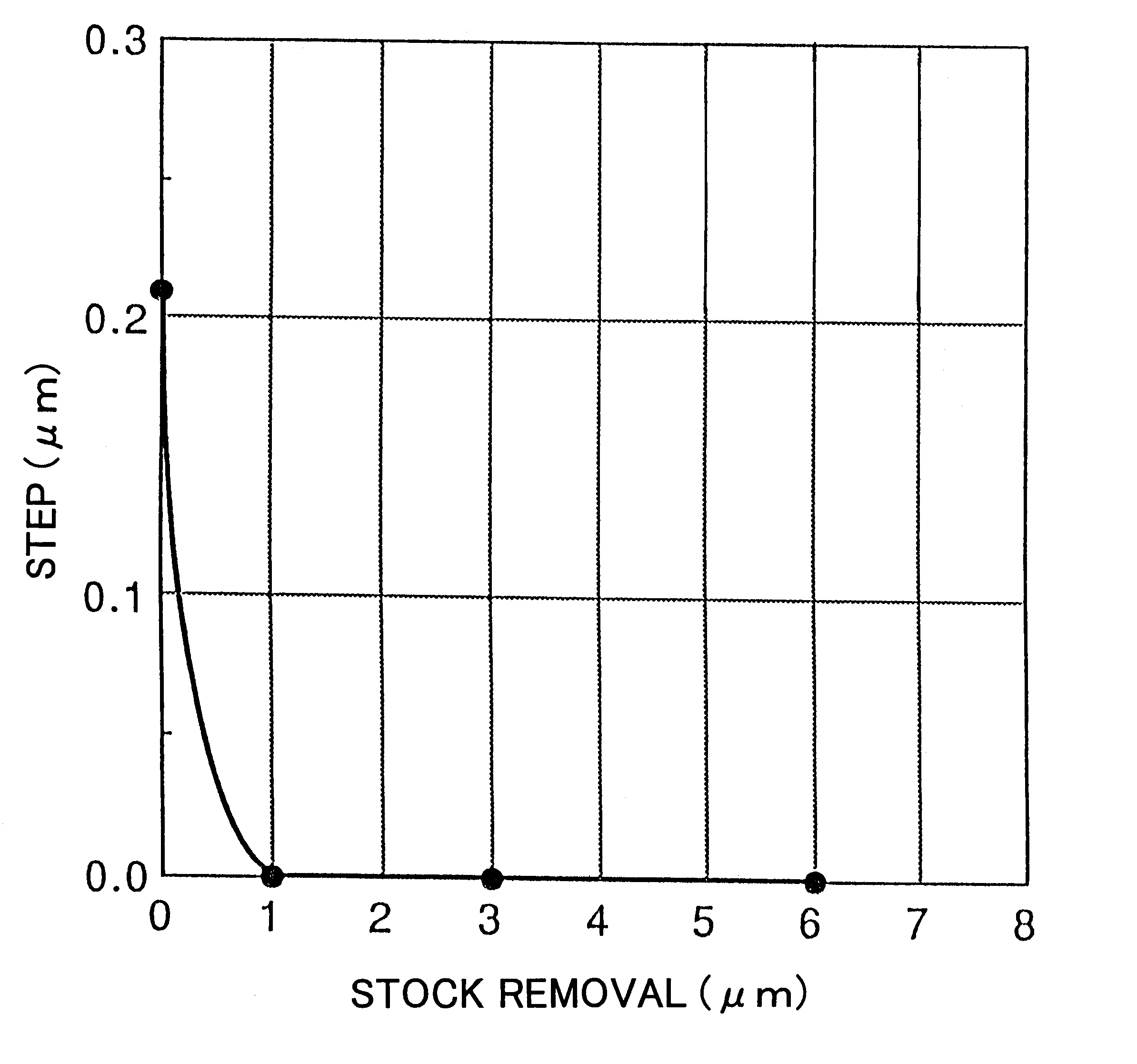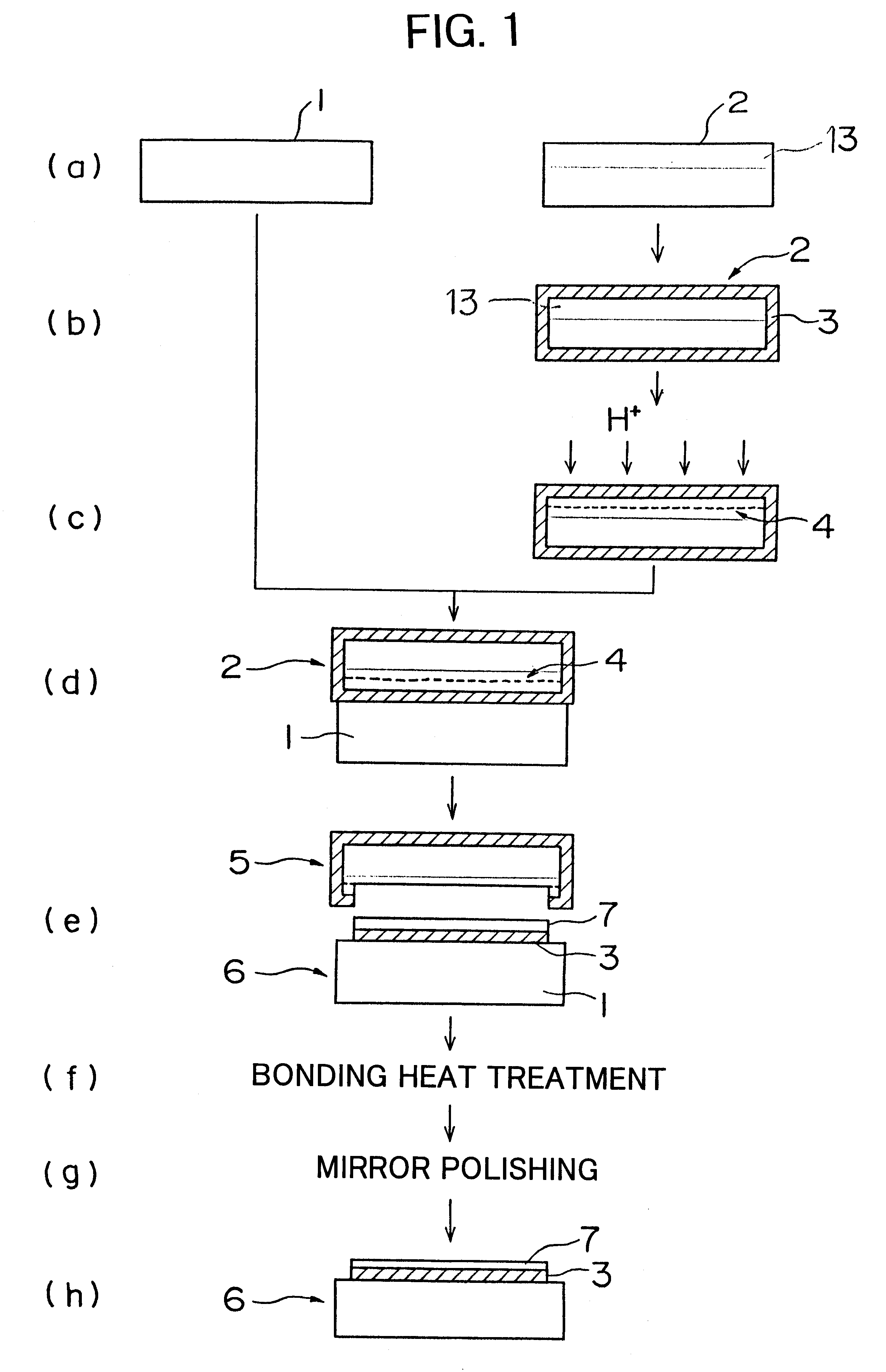Method of recycling a delaminated wafer and a silicon wafer used for the recycling
a technology of delaminated wafers and recycling methods, which is applied in the direction of basic electric elements, electrical apparatus, semiconductor devices, etc., can solve the problems of large portion of one of the wafers being pulverized and lost, and the method ofsimox has many
- Summary
- Abstract
- Description
- Claims
- Application Information
AI Technical Summary
Benefits of technology
Problems solved by technology
Method used
Image
Examples
example 1
Two silicon mirror wafers having resistivity of 1.0 to 2.0 .OMEGA..multidot.cm and a diameter of 150 mm wherein a conductive type is p type were prepared. As for one of these wafers, an epitaxial layer having a thickness of about 10 microns was grown. The epitaxial wafer was used as a bond wafer, and processed through steps (a) to (h) shown in FIG. 1 according to the hydrogen ion delaminating method to fabricate SOI wafers. Thickness of SOI layer was 0.2 micron. The major process conditions used in the method were as follows.
1) Thickness of a buried oxide layer: 400 nm (0.4 micron);
2) Conditions of hydrogen implantation: H.sup.+ ions, implantation energy of 69 keV, implantation dose of 5.5.times.10.sup.16 / cm.sup.2 ;
3) Conditions of heat treatment for delamination: in a N.sub.2 gas atmosphere, at 500.degree. C. for 30 minutes.
4) Conditions of heat treatment for bonding: in a N.sub.2 gas atmosphere, at 1100.degree. C. for 2 hours.
The high quality SOI wafer having the SOI layer of the...
PUM
| Property | Measurement | Unit |
|---|---|---|
| melting point | aaaaa | aaaaa |
| thickness | aaaaa | aaaaa |
| thickness | aaaaa | aaaaa |
Abstract
Description
Claims
Application Information
 Login to View More
Login to View More - R&D
- Intellectual Property
- Life Sciences
- Materials
- Tech Scout
- Unparalleled Data Quality
- Higher Quality Content
- 60% Fewer Hallucinations
Browse by: Latest US Patents, China's latest patents, Technical Efficacy Thesaurus, Application Domain, Technology Topic, Popular Technical Reports.
© 2025 PatSnap. All rights reserved.Legal|Privacy policy|Modern Slavery Act Transparency Statement|Sitemap|About US| Contact US: help@patsnap.com



